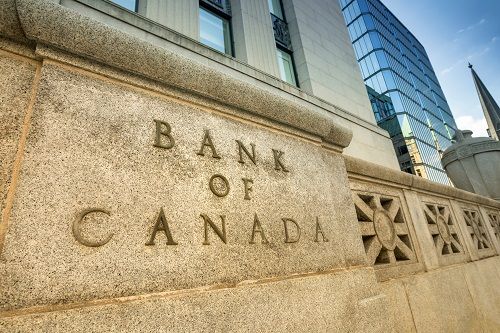The USD/CAD exchange rate rose for three consecutive days and was hovering near its highest level since August 6 ahead of the closely-watched Bank of Canada (BoC) interest rate decision.
The pair rose to a high of 1.3815 on Monday, up by almost 3% from its lowest point in September.
Bank of Canada interest rate decision
The biggest forex-related event this week will be the upcoming Bank of Canada decision scheduled on Wednesday.
Analysts polled by Reuters expect the bank to continue with the interest rate-cutting cycle by delivering a jumbo cut.
If this happens, it will be the fourth consecutive cut, solidifying the BoC’s state as the most dovish major central bank.
The bank started cutting interest rates in June when it slashed the benchmark rate from 5.0% to 4.75%. It followed that with another 0.25% cut in July when it slashed rates to 4.50%.
The last rate cut happened in its September meeting when it cut rates by 0.25% to 4.25%. Therefore, with the economy showing signs of weakening, there are chances that the bank will deliver a jumbo 0.50% cut to 3.75%.
Some analysts expect the bank to cut by 25 bps in this meeting followed by 50 bps in its December meeting. In a statement last week, Stefane Marion, the Chief Economist at the National Bank of Canada (NBC) predicted that the first jumbo cut would happen in December. He said:
“How low we’re going to get below 3% remains to be seen but the first step is for the Bank of Canada to bring us to 3% now. We needed to be there yesterday.”
The same view is shared by bankers at the Canadian Imperial Bank of Commerce (ICBC), who believes that the current rates are highly restrictive.
The most recent data showed that Canada’s inflation has continued falling in the past few months. According to the statistics agency, the headline Consumer Price Index (CPI) dropped from 2.0% in August to 1.6% in September, higher than the expected drop of 1.8%.
Like in other countries, Canada’s inflation peaked at 8.1% in July 2022, and has dropped to 1.6%, helped by the lower energy prices and higher rates.
More economic data have shown that Canada’s economy was not doing well. The most recent report showed that Canada’s GDP had zero growth in August as the manufacturing and transportation sectors retreated. It was the third month of zero growth in six months.
As such, more rate cuts would help to supercharge the economy by lowering the cost of borrowing.
Carry trade opportunity
The USD/CAD exchange rate has rallied as it has become a favorite carry trade opportunity now that the US has published strong economic numbers recently.
Data released this month showed that the nonfarm payrolls rose by 254k last month, while the unemployment rate fell to 4.1%.
Another report showed that inflation is not falling as quickly as was expected. The headline Consumer Price Index (CPI) fell to 2.4% in September, while the core CPI remained at 3.2%. The core CPI is a popular figure that excludes the volatile food and energy prices.
Last week’s data showed that initial jobless claims unexpectedly fell, while retail sales continued rising.
Therefore, US bond yields have risen to their highest levels in over two months as hopes that the Fed will not be as dovish as previously thought. As such, the bank may decide to skip cutting rates in its November meeting.
The USD/CAD, therefore, has become a popular carry trade opportunity. A carry trade is a situation is where investors borrow cash from a lower-interest-rate country like Canada and invests in a higher-yielding one like the US.
The USD/CAD has also reacted to the falling crude oil prices, as Brent and West Texas Intermediate have fallen to $73.40 and $69.10. The Canadian dollar is often impacted by crude oil prices because it is the fourth-biggest exporter.
USD/CAD technical analysis
USD/CAD chart by TradingView
The daily chart shows that the USD to CAD exchange rate bottomed at 1.3440, where it formed a double-bottom pattern. In most periods, this is one of the most bullish chart patterns in the market.
The pair has moved above the neckline at 1.3647, its highest swing on September 19. Most notably, the 50-day and 200-day moving averages have crossed each other, making a golden cross pattern, a popular bullish sign.
The MACD and the Relative Strength Index (RSI) have pointed upwards. Therefore, the pair will likely continue rising as bulls target the next point at 1.3945, its highest point on August 5. If this happens, the pair will need to rise by about 0.90% from the current level.
The post USD/CAD forms double-bottom, golden cross ahead of BoC decision appeared first on Invezz
